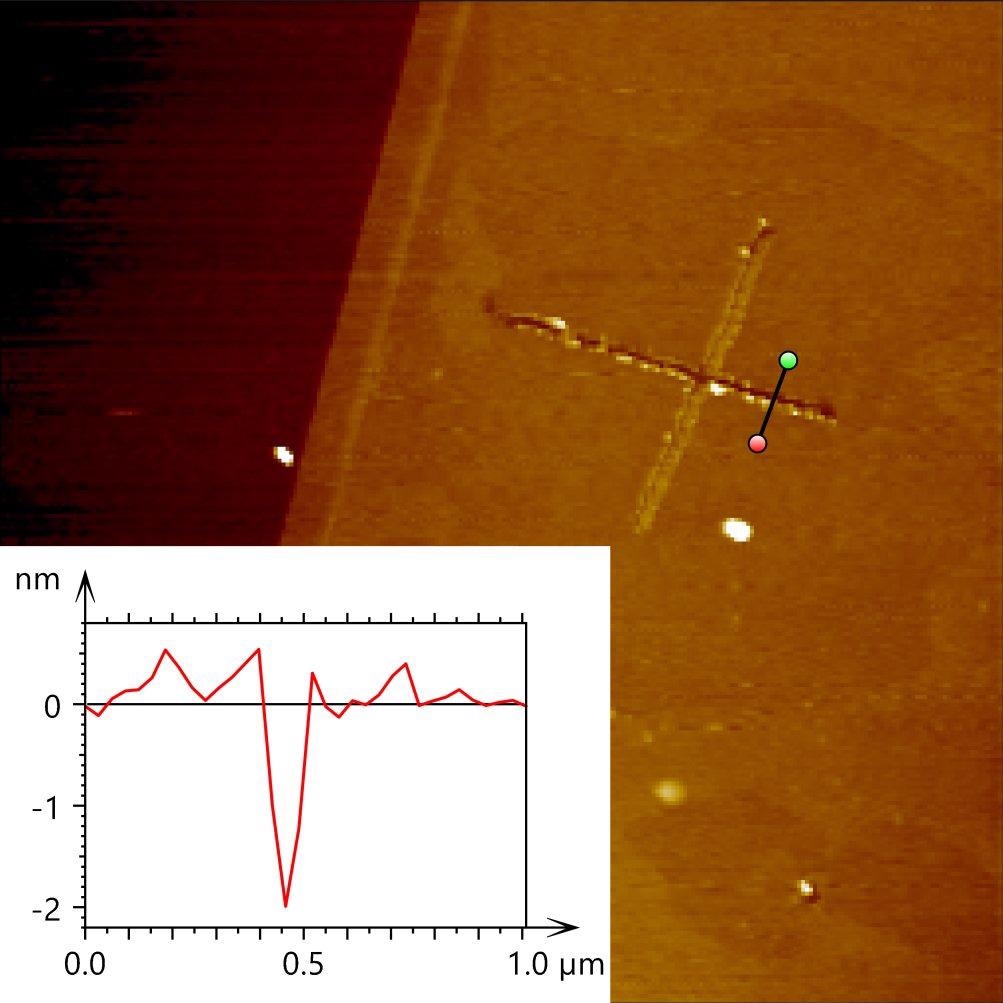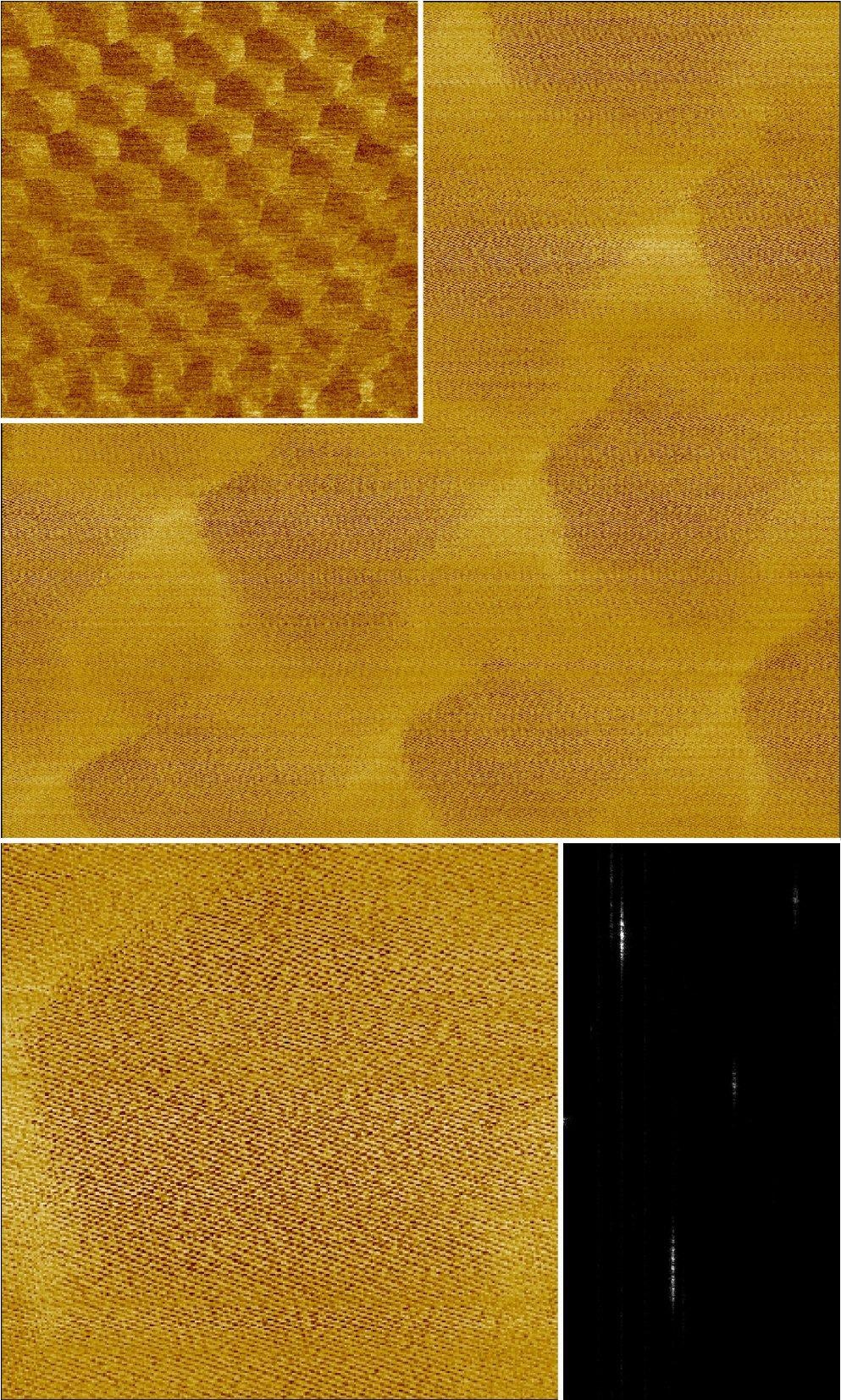Our application scientists have made some major break-through findings for graphene in collaboration with scientists in the field. Dr. Ed Nelson just returned from an inspiring visit to the Kim group at Harvard University to test graphene cutting with the FlexAFM.

Image Credit: Nanosurf
Dr. Patrick Frederix received samples from Nanoelectronics group TIFR, India to test measurements of the moiré pattern with CoreAFM, FlexAFM and DriveAFM. CoreAFM showed clean contrast in both phase and amplitude images with the piezo-response force microscopy (PFM) mode on the contact resonance frequency peak. It would also be possible to measure the moiré pattern on a FlexAFM in a glovebox.

Image Credit: Nanosurf
As already shown in literature (McGilly, L.J., Kerelsky, A., Finney, N.R. et al. Visualization of moiré superlattices. Nat. Nanotechnol. 15, 580–584 (2020) - https://doi.org/10.1038/s41565-020-0708-3, the moiré superlattice measured by PFM also causes a shift in contact resonance, which explains the phase and amplitude contrast. This may imply that the moiré pattern will also be visible when measured by other means of excitation on the resonance peak, e.g. force modulation.
This was successfully verified on DriveAFM, using photothermal excitation to oscillate the cantilever at the contact resonance. The icing on the cake is the visualization of both the moiré superlattice and atomic lattice of graphene in a single image. “These findings prove the power of Nanosurf instruments as a tool for graphene research” says Dr. Patrick Frederix.
A summary of applications of AFM as a tool for graphene research is also available in our application note.
"The FlexAFM has given us a streamlined and consistent method to cut graphene and graphite gates with ultra-fine precision, allowing for entirely new types of heterostructure devices. What's most remarkable is that this functionality is built in, and is much more simple to setup and use compared to similar techniques in other AFM systems with a much steeper price tag."
J. Ehrets, Kim Lab, Harvard University